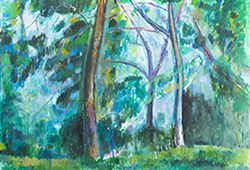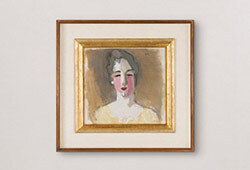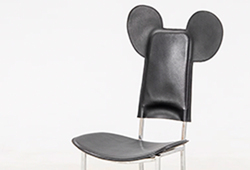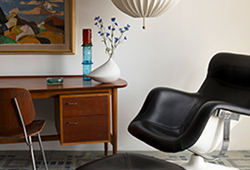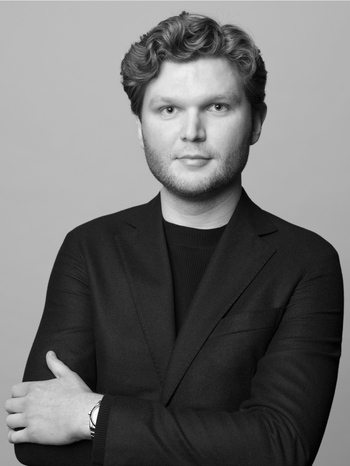Uno Åhrén
a rare ebonized pear wood and pewter mirror, Firma Svenskt Tenn, early 1930s.
Of rectangular shape. 150 x 70 cm.
Wear, improved gluing on pewter inlays.
Provenance
The artist Sigrid Aminoff, née Oxenstierna (1904-1994), Stockholm.
Thence by descent to the current owner.
Aminoff studied at the Royal Academy of Fine Arts in Stockholm 1925-1930, where she was a classmate of Göta Trägårdh. Göta, along with her husband Björn Trägårdh, a long-time collaborator at Svenskt Tenn, remained close friends with Aminoff.
Exhibitions
Versions of mirrors in ebonized wood and pewter were displayed at the Swedish Exhibition of Industrial Arts & Crafts at Dorland House in London in March-April 1931 and subsequently at Galerie Moderne in Stockholm in September that same year.
Literature
Catalogue, "Möbler - Firma Svenskt Tenn", Bröderna Lagerström 1931, compare with the slightly larger model 1096 illustrated p. 25.
Eva Rudberg, "Uno Åhrén", Byggforskningsrådet 1981, compare p. 107.
Monica Boman (ed.), "Estrid Ericson: orkidé i vinterlandet", Carlssons 1989, compare Åhrén's original sketch for the exhibition in London p. 95.
More information
Designed in 1931.
Designer
Uno Åhrén was a Swedish architect who graduated from Tekniska Högskolan i Stockholm (the Royal Institute of Technology) in 1919. Uno Åhrén made his debut with a residential interior at the "Home Exhibition" at Liljevalchs in 1917. He was one of the earliest collaborators with Estrid Ericson at the Svenskt Tenn. Åhrén participated in the Paris World Fair in 1925 with a ladies' salon.
Åhrén, who would become one of the main advocates of functionalism, he only worked as a furniture designer at the beginning of his career. The late 1920s in Sweden were marked by Åhrén's radical thoughts and ideas; he was one of the most eager proponents of functionalism, including as a co-author of the publication "acceptera".
Åhrén's focus was primarily on the social perspective in housing issues. From the late 1910s onwards, Uno Åhrén participated in a number of industrial art exhibitions: in addition to the mentioned Home Exhibition in 1917, the Gothenburg Exhibition in 1923, the Paris World Fair in 1925, the Stockholm Exhibition in 1930, and the World Fair in Chicago in 1933. After 1930, Åhrén devoted himself mainly to urban architecture and city planning, including as a city planning architect in Gothenburg from 1932-43 and as the head of Svenska Riksbyggen during the 1940s. He is most renowned for his strong pathos as a driving debater in the social housing issue. For Svenskt Tenn, he designed both furniture and pewter objects of a more luxurious nature.






